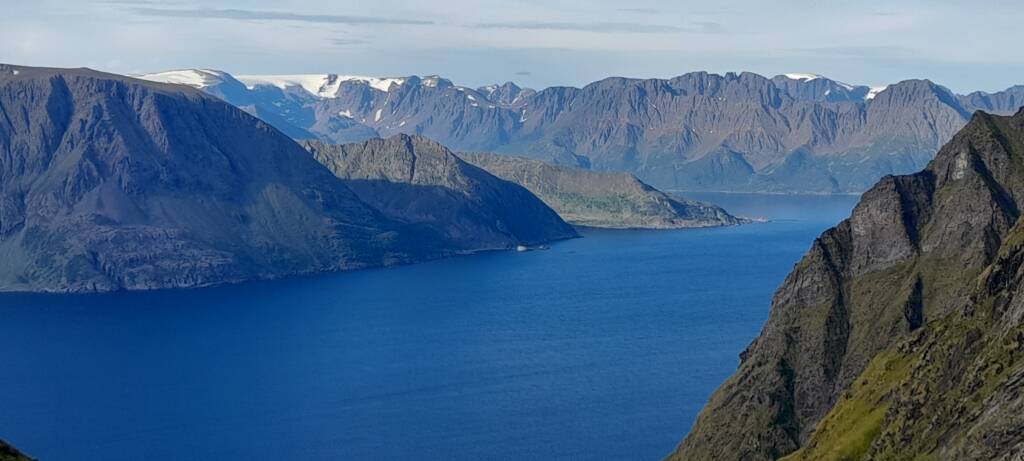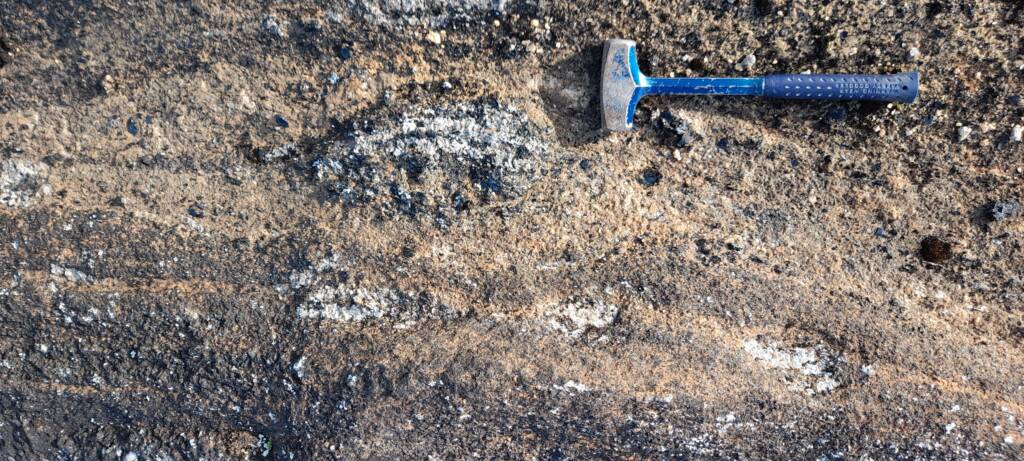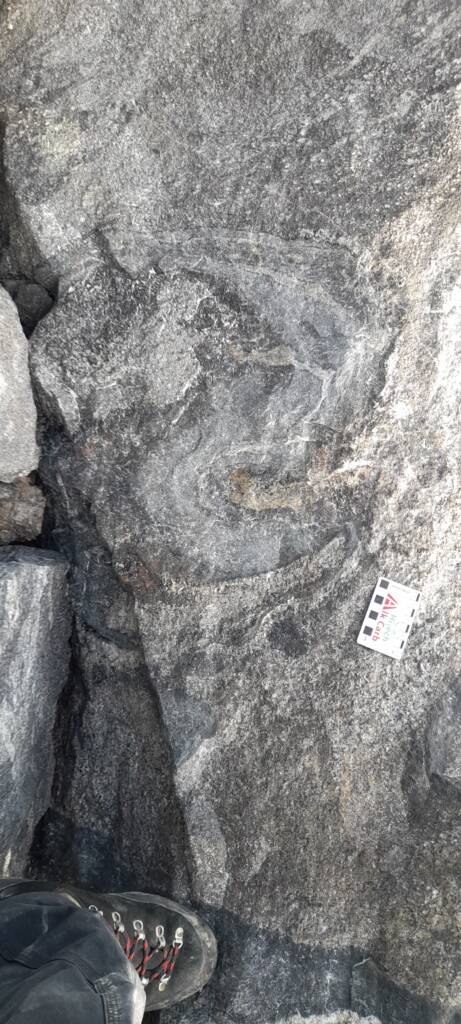IAP-25-102
Carbonatite exsolution from Nepheline Syenite: The Lillebukt Nepheline Syenite-Carbonatite Complex, Northern Norway
The origin of carbonatite, and its relationship to mineralisation, are key unknowns in understanding how critical metal deposits (e.g. rare earth and niobium) in carbonatite form. Three hypotheses are postulated: 1. Carbonatite is a direct mantle melt, formed at depth and ascending through the crust; 2. Carbonatite is dissolved in lamprophyre magma and exsolves into two liquids on ascent, 3. Carbonatite is a component of nepheline syenite magma and exsolves by liquid immiscibility at the end of fractionation. Unfortunately each mechanism provides mantle-derived geochemical fingerprints, hence constraining the genesis of mineralised carbonatite is difficult.
The Lillebukt Igneous Complex in Northern Norway is an alkaline system containing carbonatite and nepheline syenite. Recent glaciation has dissected the complex, and fresh exposures from quarrying create an extraordinary natural laboratory in which to explore the field and geochemical relationships of these two magmatic components. The field data show that lenses of nepheline syenite pegmatite occur within carbonatite and carbonatite cuts altered nepheline syenite. This location is an exceptional site at which to test the hypothesis that the carbonatite and nepheline syenite are related by liquid immiscibility. We will also explore whether the nepheline syenite is exceptionally fresh (and suitable for ceramics) precisely because the fluid component of the magma was lost to the adjacent carbonatite by detailed fieldwork, and exploring the whole-rock geochemistry.
Geochemistry will be a critical component of the project because magmas that are related by immiscibility should initially be in chemical equilibrium, but after unmixing they will diverge chemically as they evolve. The project will explore this through the partitioning of trace elements into apatite in both carbonatite and nepheline syenite, using laser ablation ICP-MS at Durham University. There will also be an opportunity to look for melt inclusions that can record any liquid immiscibility in situ. After rehomogenisation in a high-temperature heating stage, these can be analysed to measure the melt composition(s) directly.
The outputs of this work will be the first analysis of an intimately interleaved carbonatite-nepheline syenite complex. It will test the hypothesis that liquid immiscibility is the cause of the unusual field relationships, one in which the process may have been caught in action. The candidate will also explore the distribution of metals and volatiles between the two components, to constrain how one might identify carbonatite elsewhere formed by the same mechanism. In doing so, the candidate will constrain a key unknown in the genesis of many of the world’s most important and critical resources.



Click on an image to expand
Image Captions
View from the Lillebukt Mine north,Flattened enclaves of nepheline syenite pegmatite in carbonatite. Are these evidence of in situ liquid immiscibility?,Complex interaction of carbonatite “dykes” cutting the nepheline syenite
Methodology
The student will complete field studies with the CASE partner, Sibelco Nordic, at their Lillebukt mine. The project will involve fieldwork in Arctic Norway and hence will appeal to a candidate with an interest in fieldwork and the outdoors. They will map the field relationships of the two, the variability within the carbonatite, and relate the geochemistry to that of the nepheline syenite. They will also map the distribution of fresh nepheline syenite to determine if there whether the syenite is fresher or less fresh approaching the contact. The petrography of the two will be explored using whole-rock and mineral geochemistry.
Project Timeline
Year 1
Basic petrography and literature in first quarter, whilst also analysing material from Lillebukt that is currently in St Andrews collections. Electron probe microanalysis of nepheline syenite and carbonatite, assessment for melt inclusions, and preliminary LA-ICP-MS analysis of apatite. Fieldwork in the summer of year 1 in Northern Norway with Sibelco Nordic to map out the field relationships of the two components on large (km) and small (m) scales where necessary.
Year 2
Whole-rock and in situ geochemical and isotopic analysis of the two components, beginning with whole rock geochemistry, LA-ICP-MS of apatite and C-O analysis of carbonate and silicate components. Sulfur isotopes of the two components will also be explored to determine the temperature of crystallisation (by looking at sulfur isotope partitioning between co-existing mineral pairs) at which each part crystallised. The field data and analysis will be written for publication.
Year 3
Writing up the preliminary isotope data, and the exploration of the relationship between hydrothermal alteration and the presence/absence/proximity of carbonatite. The textural, geochemical and isotopic consequences of hydrothermal alteration will be constrained and, where possible, quantified. This will be related to the “ore quality” of the nepheline syenite for ceramic purposes.
Year 3.5
Writing up final holistic paper on the genesis of the Lillebukt carbonatite/nepheline syenite complex, answering the hypothesis that the two components are related by liquid immiscibility.
Training
& Skills
The project will provide training in: a) the use of petrography for mineral identification, using both optical and electron microscopy; b) sample preparation and running of whole-rock and in situ geochemical studies; c) the preparation and completion of isotope samples, particularly in the S isotope system; d) in situ analysis using laser ablation ICP-MS; e) the interpretation of geochemical data for leading-edge petrogenesis of igneous systems.
The project will also have significant impact: a) the Sibelco Nordic Lillebukt mine extracts ultrafresh nepheline syenite for use in ceramics. The distribution of hydrothermal alteration in the syenite is critical to predicting “ore quality” as the workings go deeper; b) the identification of the relationship between carbonatite formation and its critical metal cargo – as well as identifying how to identify the origin of carbonatite – is essential for prospectivity mapping in critical metal resources globally. This project has the potential to have major impact in the resources from alkaline igneous rocks.
References & further reading
Beard CD, Finch AA, Borst AM, Goodenough KM, Hutchison W, Millar IL, Andersen T, Williams HM, Weller OM (2024) A phlogopite-bearing lithospheric mantle source for Europe’s largest REE-HFSE belt: Gardar Rift, SW Greenland. Earth and Planetary Science Letters, 640, 118780.
Berndt J & Klemme S (2022) Origin of carbonatites – liquid immiscibility caught in the act. Nature Communications 13, 2892
Humphreys MCS (2011). Silicate liquid immiscibility within the crystal mush: Evidence from Ti in plagioclase from the Skaergaard Intrusion. Journal of Petrology 52, 147-174
Hutchison W, Finch AA et al. (2021) Mantle sources and magma evolution in Europe’s largest rare earth element belt (Gardar Province, SW Greenland): New insights from sulfur isotopes. Earth & Planetary Science Letters, 568, 117034
Sokół K, Finch AA, Hutchison W, Cloutier J, Borst AM, Humphreys M (2022) Quantifying metasomatic HFSE-REE transport from alkaline magmas, Geology, 50, 305-310, doi.org/10.1130/G49471.1.
Weidendorfer D & Asimow PD (2022) Experimental constraints on truly conjugate alkaline silicate-carbonatite melt pairs. Earth and Planetary Science Letters 584, 117500.

